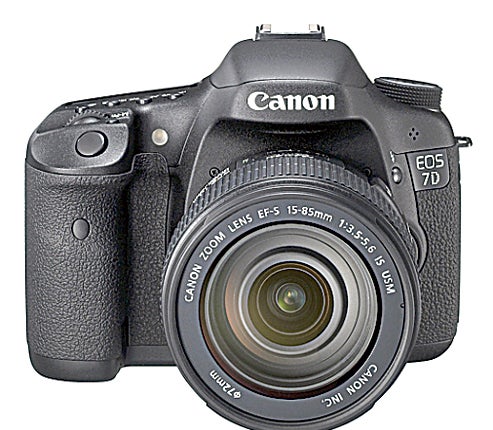Canon EOS 7D: A new lens on the scene
Director Mike Figgis believes this ordinary camera will change the way movies are made. He tells Steve Rose why it's the best bit of kit since the invention of 16mm film

Your support helps us to tell the story
From reproductive rights to climate change to Big Tech, The Independent is on the ground when the story is developing. Whether it's investigating the financials of Elon Musk's pro-Trump PAC or producing our latest documentary, 'The A Word', which shines a light on the American women fighting for reproductive rights, we know how important it is to parse out the facts from the messaging.
At such a critical moment in US history, we need reporters on the ground. Your donation allows us to keep sending journalists to speak to both sides of the story.
The Independent is trusted by Americans across the entire political spectrum. And unlike many other quality news outlets, we choose not to lock Americans out of our reporting and analysis with paywalls. We believe quality journalism should be available to everyone, paid for by those who can afford it.
Your support makes all the difference.When Jean-Luc Godard declared that all you need to make a movie is "a girl and a gun", he wasn't being entirely truthful. Above all, you need a camera, which has often been more of a sticking point than the other two. While professional-quality stills cameras have always been affordable, even in the digital age – movie cameras are traditionally the sort of equipment you hire, or remortgage your house to buy. But that's all about to change, thanks to – of all things – a stills camera.
Canon's EOS 7D, released last year, looks no different to any other digital SLR camera you'd take your artful holiday snaps on, but the camera's video function – traditionally an afterthought on stills cameras – is good enough to shoot a proper movie with.
According to film-maker and photographer Mike Figgis, the 7D is "one of the major breakthroughs in cinematic technology of the last 100 years". Figgis, a longtime digital film-making evangelist, used the 7D to shoot the film elements controversially added into his current production of Donizetti's Lucrezia Borgia for the English National Opera. "I shot and edited it on my laptop," says Figgis, "but the real test was when we went to the ENO and put it on the big screen with a high-quality projector... I don't think I've ever been so wowed since I first shot on 16mm."
Digital video is nothing new, of course, and the subtraction of film stock and processing expenses has already lowered the cost of film-making dramatically. But until now you've had the choice of either making low-budget films with a consumer digital camera – like, say Festen or Paranormal Activity – or getting a high-end professional camera like a RED One, starting price: about £15,000. The Canon costs just over £1,000 but delivers a Full HD image (a resolution of 1,080 lines). The real revolution, though, is that thanks to a relatively huge sensor inside the camera, the 7D's images don't look like video, says Figgis. "If you use the right lenses you can completely emulate the shallow depth of field that a cinema lens gives you, which everybody, whether or not they know anything about film, recognises instinctively as looking like cinema. Whereas with video you always have this horrific, massive depth of field where everything's in focus."
Figgis traditionally works in 16mm, but is now planning to shoot his next feature on a 7D. Others have already done so. Darren Aronofsky's Black Swan, for example, was mostly shot on Super 16mm film, but a 7D was used to shoot some scenes on the subway. Did you spot the difference? For the current generation, the size and price of the Canon is a godsend, says Richard Lonsdale, a British film-maker whose debut short film, Spring, was shot on a 7D, and recently played at the Sundance and Berlin Film Festivals: "It was super-cheap to make, maybe £8,000, including paying everyone. Making it in 16mm probably would have cost about £4,000 more, so nobody would have got paid." Like Crazy, the big winner at this year's Sundance, was also shot entirely on a 7D.
Before you set off with your girl, gun and Canon to launch your own movie career, there are still a few more ingredients you might need to become an auteur; chiefly, skill. Nevertheless, competitors like Nikon and Sony are now chasing Canon, so even better-value products are doubtless to come. "I can't think of a reason why you wouldn't want to shoot on this equipment," Figgis sums up. "It's so easy to use and the result is incredible."
Mike Figgis's Lucrezia Borgia airs on Sky Arts tonight at 7.30pm
Join our commenting forum
Join thought-provoking conversations, follow other Independent readers and see their replies
Comments